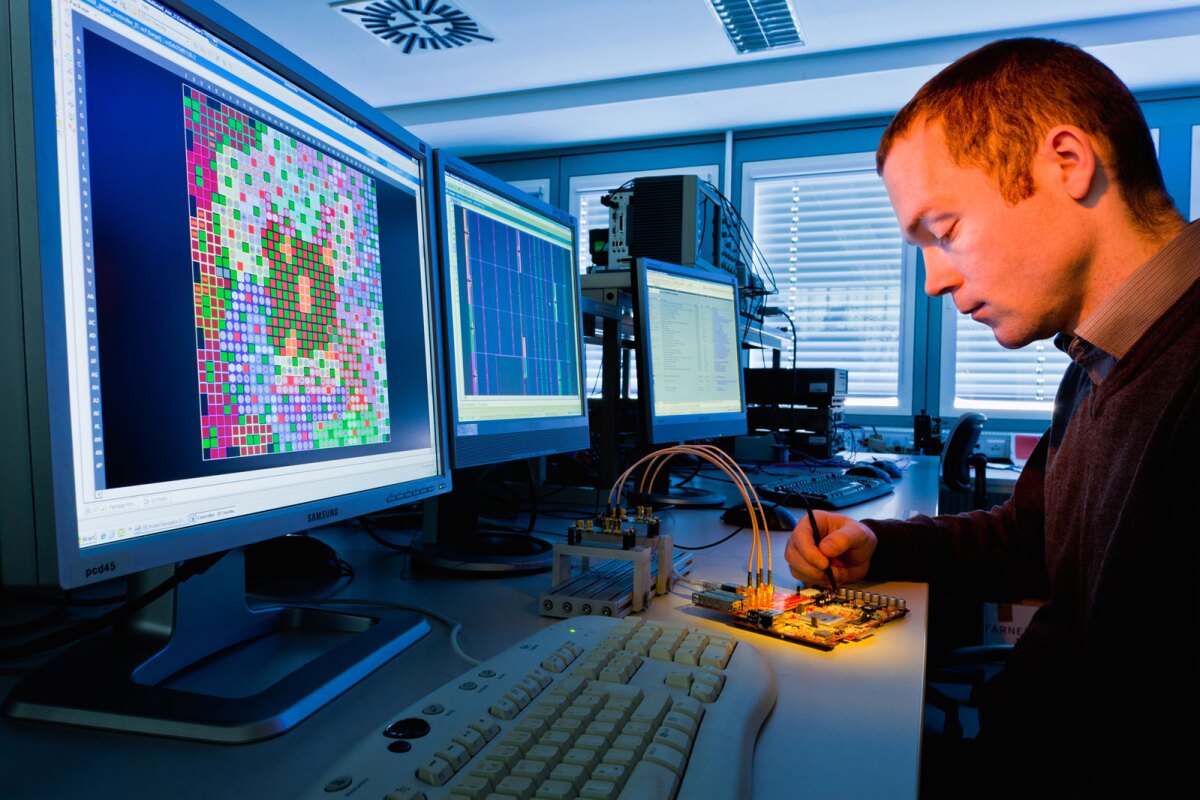Back around the turn of the century, infrared ports for wireless data transfer over short distances were commonplace on many mobile devices. But it wasn't long before infrared communication technology was kicked to the curb in favor of the more versatile radio-based Wi-Fi and Bluetooth technologies. Fraunhofer researchers are looking to resurrect infrared wireless data transfer technology with the development of a “multi-gigabit communication module” that can wirelessly transfer data 46 times faster than Wi-Fi and 1,430 times faster than Bluetooth.
The new infrared module developed by Frank Deicke, a researcher at the Fraunhofer Institute for Photonic Microsystems (IPMS) in Dresden, boasts a data transfer rate of 1 gigabit per second (Gbps), making it not only significantly faster than conventional Wi-Fi and Bluetooth wireless technologies, but also six times faster than a wired USB 2.0 connection.
The small infrared module developed by Deicke and his colleagues specifically for the wireless transfer of large amounts of video between devices consists of hardware and software components. The hardware includes a transceiver about the size of a child’s fingernail that contains a laser diode to send infrared light pulses and a photo detector to receive them. This optical component is able to send and receive light signals simultaneously.
Because the light signals become weakened and distorted when traveling through the air, the researchers programmed error-correction mechanisms into the module, along with high-speed signal processing to overcome the bottleneck in the encoding of the data before transmission and subsequent decoding at the receiving device. This helps reduce the encoding/decoding load placed on the microprocessors, which helps keep energy consumption down.
As an optical technology, the module still requires a clear line of sight between the communicating devices, but Deicke says this isn't a problem as it was designed for transferring data between two nearby devices, such as a camera or smartphone and a PC or laptop.
Deicke and his team admit that the technology needs to be accepted as standard by manufacturers before it can catch on, which is why he is an active member of the Infrared Data Association (IrDA) and contributes to the “10 Giga-IR working group,” the name of which provides a hint at the planned next step for the technology.
“Our current infrared module has already demonstrated that infrared technology is able to go far beyond established standards,” he says. “We plan to improve performance even more in the future.”
Having already achieved data transfer rates of 3 Gbps with his current model, he hopes that 10 Gbps speeds are not too far away.
Source: Fraunhofer




